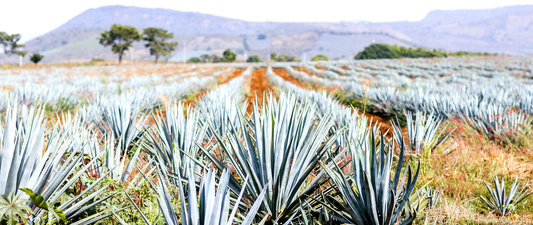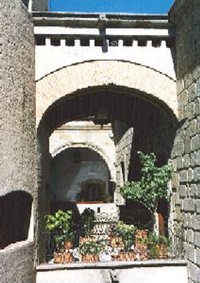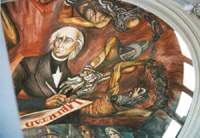 Barranca and Zoologico Guadalajara . Both attractions are located about a 20 minute ride from the center of the city. Zoologico Guadalajara is located on the edge of the Barranca – a 2000+ foot gorge cut deep into the heart of the earth by centuries of river erosion. Slightly similar looking to parts of the Grand Canyon in the United States, minus the bold colors. As one descends to the bottom, the climate becomes more tropical and fruits such as papayas, guavas, and mangoes are grown and shipped to markets in Guadalajara.
Barranca and Zoologico Guadalajara . Both attractions are located about a 20 minute ride from the center of the city. Zoologico Guadalajara is located on the edge of the Barranca – a 2000+ foot gorge cut deep into the heart of the earth by centuries of river erosion. Slightly similar looking to parts of the Grand Canyon in the United States, minus the bold colors. As one descends to the bottom, the climate becomes more tropical and fruits such as papayas, guavas, and mangoes are grown and shipped to markets in Guadalajara.
Some of the uppermost ridges of the canyon can actually be seen from the top of taller buildings in downtown Guadalajara (although this view often does not exist due to bad air pollution).
A picturesque part of the canyon is located at the end of the road that passes in front of the Zoologico Guadalajara. The road ends at the canyon and from here, one walks through the park to several viewing platforms. The zoo is located about 3/4 of a mile from the end of the road. It encompasses 100 acres and also features several platforms with limited views of the canyon.
I don’t usually make a practice of visiting zoos when I am traveling but this zoo was highly recommended to me by friends. The zoo houses numerous large mammals, an excellent display of birds and snakes, and monkeys. Directly next door is a large amusement park with many rides. I was there on Christmas Day and as expected on such a holiday, the amusement park was packed with people. The weather was in the high 70’s – an ideal time of the year to visit, especially if you live in colder climate latitudes. Zoo website: www.zooguadalajara.com.mx
Bullfighting is held at certain times of the year in Guadalajara. Some of the world’s best bull fighters Plaza Nuevo Progreso home (which seats 25,000) north of the downtown area. This stadium is located near the zoo. The best time to see a bull fight is between October and March. Bullfights take place on Sundays starting at around 4:30pm. Tickets for the current days show can be purchased on site at the bull ring. Horse shows and concerts are also held at various times throughout the year.
Contact Info:
Address: Pirineos #1930, Independencia –> Guadalajara, Jalisco.
Between the Streets: Calz. Independencia Nte. y Fidel Velasques
Telephone: (33) 3637-9982 / 3651-8378 / 3651-8506
E-Mail: nuevoprogreso@hotmail.com
 Cathedral of the Assumption of Our Lady faces Avenida Alcalde; its appearance can easily throw one off when trying to guess its age. It is a mix of Byzantine, Greek, Gothic, and Arabic styles. Construction was begun in 1561 and was finished in 1618. However, the two 200 foot towers were erected in 1848 after a tremendous earthquake. A large painting called “The Assumption of the Virgin” is located inside the church.
Cathedral of the Assumption of Our Lady faces Avenida Alcalde; its appearance can easily throw one off when trying to guess its age. It is a mix of Byzantine, Greek, Gothic, and Arabic styles. Construction was begun in 1561 and was finished in 1618. However, the two 200 foot towers were erected in 1848 after a tremendous earthquake. A large painting called “The Assumption of the Virgin” is located inside the church.
Instituto Cultural Cabanas is at the far eastern end of the centrally located Plaza Tapatia. This building used to house orphans but now is open to the public; one of the highlights of any visit are the Orozco murals (José Clemente Orozco was a famous Mexican painter). The most spectacular of the murals are seen in the main part of the building displayed on both the walls and ceilings. Conveniently, one can lay down to see the ceiling murals from several benches and tables provided.
Cultural Cabanas is not just buildings, but also 23 different patios and courtyards featuring rotating works of art throughout the year. Note the numerous citrus trees in the courtyards; do not be fooled into picking the visually delicious looking fruits. What look like sweet oranges and grapefruits are really incredibly sour fruits; they are ornamental. A small admission is charged for entry to the exhibits; discounts are given for students.
Museo Clemente Orozco is located just east of the Minerva Circle off of Avenida Vallarta. This building is the former workshop and home of painter, Jose Clemente Orozco and contains numerous photographs, tools, clothing, and his personal easel. An enormous Orozco mural, titled “Alegoria del Vino” is located in front of an equally massive three story window. The museum is open Tuesday through Sunday from 10 until 2pm.
Palacio Gobierno contains the most famous murals by Jose Clemente Orozco. I have studied several of these specific pieces in previous art classes. His works are activity driven and one needs time to absorb their visual impact. I found that by lying down on the stairs, underneath the murals, I could relax and further enjoy the paintings. Many of his murals contain themes relating to war, freedom, and oppression.
The building that houses murals dates from 1643. During our visit we met a gentleman, short of stature but full of interesting stories. He looks part Mexican and Japanese. He will offer his tour guide services freely, but expects a small tip. Remarkably, he speaks 9 different languages fluently.
Teatro Degollado is located on the west end of Plaza Tapitia. Visitors won’t miss seeing this building due to the numerous columns in the front. Features four stories above the main viewing area on the lower floor; the inside is very elegant. It is home to Guadalajara’s Symphonic Orchestra and is used for operas and live theatre and the University of Guadalajara’s Folkloric Ballet performs every Thursday afternoon. Those who walk to the back of the theatre will see a large mural depicting the founding of Guadalajara in 1542. This nearly 500 year old historic site is located very close to Teatro Degollado.
Templo Expiatorio Church is well worth a visit especially around noon. Every day at 12pm, 12 apostles make an appearance. The interior is gorgeous.



Leave a Reply